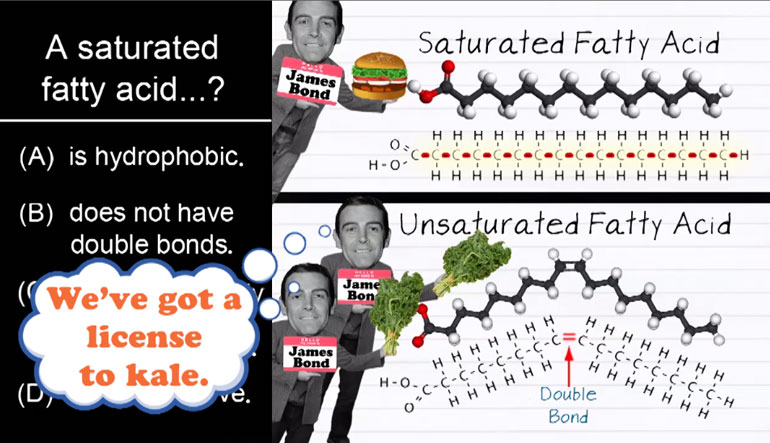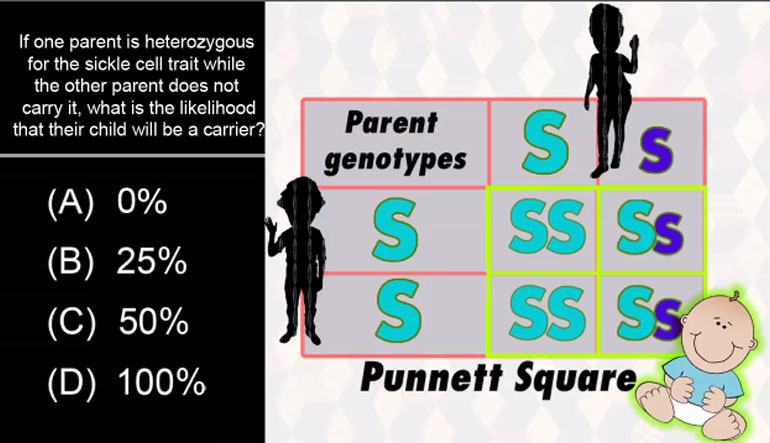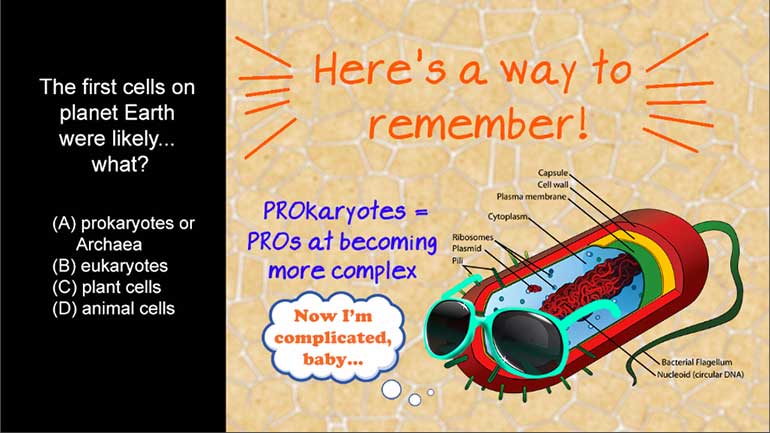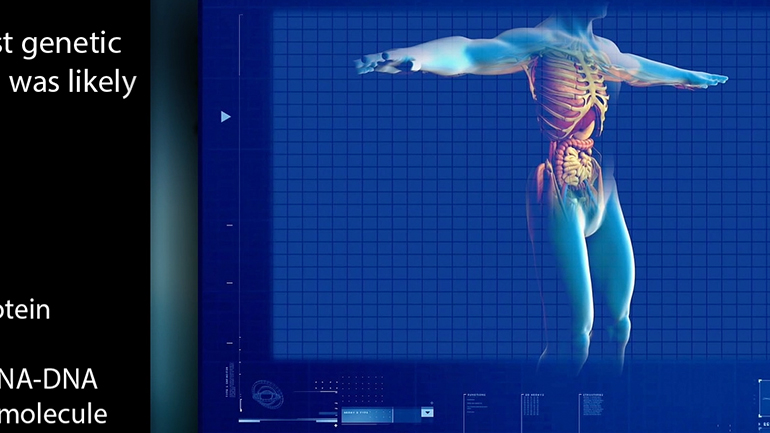ShmoopTube
Where Monty Python meets your 10th grade teacher.
Search Thousands of Shmoop Videos
AP Biology 1.4 Essential Life Process Information 45 Views
Share It!
Description:
AP Biology 1.4 Essential Life Process Information. A 1:2:1 phenotypic ratio is the hallmark of what type of cross?
Transcript
- 00:04
Here’s your shmoop du jour, brought to you by Gregor Mendel…
- 00:06
… the father of genetics… [A picture of Gregor Mendel and a DNA helix]
- 00:08
…and noted pea lover.
- 00:12
A 1 to 2 to 1 phenotypic ratio is the hallmark of this type of cross.
- 00:18
And here are the potential answers...
Full Transcript
- 00:19
Let’s use a Punnett Square to figure it out. [A punnett square]
- 00:24
Honestly, we use a Punnett Square to figure everything out.
- 00:26
Although…they’re really not the best for advanced calculus…[Boy attempting to use a punnett square to solve a calculus problem]
- 00:29
Okay, so…keep in mind that incomplete dominance means that a phenotype with a mixed pairing
- 00:34
of genes will display neither the dominant nor recessive trait, but its own unique trait. [Mendel and Punnett stood together discussing the punnett square]
- 00:41
All right…how’s A lookin’?
- 00:43
“Monohybrid cross with simple dominance”.
- 00:45
Well…that cross yields a 3 to 1 ratio.
- 00:48
In other words, any phenotype containing a dominant “A” gene will display that trait. [Mendel crossing out Punnett and replacing it with Mendel]
- 00:53
Which is what makes it “simple dominance,” and that’s not what we’re looking for.
- 00:57
Option C…a Dihybrid cross…examines the phenotypic outcomes of 2 traits, not 1, which
- 01:02
is what a monohybrid cross does.
- 01:04
This yields 16 combinations, not 4…the sum of 1 to 2 to 1.
- 01:09
Way too many combos for our liking, so that’s not the answer.
- 01:12
Buh-bye, C.
- 01:13
How about D, a test cross? [A punnett square with question marks]
- 01:14
A test cross can be used to determine the genotype of a plant or animal. [baby deers in a field]
- 01:19
Think of it as working backwards to see what an organism’s Punnett Square would look
- 01:23
like.
- 01:24
Very useful…and fun, if you’re bored on a train…but it’s not the kind of cross
- 01:27
we’re after.
- 01:28
The correct answer is B, a monohybrid cross with incomplete dominance. [A monohybrid cross punnett square]
- 01:33
Think about the example of human hair. [A woman brushing her hair]
- 01:35
In humans, "S" is for straight hair, while "C" is for curly hair. [A woman with curly hair and a woman with straight her in a hairdressers store]
- 01:39
However, a mixed "SC" will have wavy hair.
- 01:43
Anyway, this is what makes it an example of incomplete dominance, as opposed to simple
- 01:48
dominance…
- 01:49
So, this type of cross yields a 1 to 2 to 1 phenotypic ratio.
- 01:52
Two out of four possible offspring of a monohybrid cross with incomplete dominance will have [B answer circled in green]
- 01:56
a mixed phenotype.
- 01:57
Let’s give it up for Punnett Squares.
- 01:59
Have you ever had more fun in your life? [Punnett telling Mendel to forget about the naming of Punnett Squares]
Up Next
AP Biology: Biological System Interactions Drill 1, Problem 1. Complete the sentence about a saturated fatty acid.
Related Videos
AP Biology: Essential Life Process Information Drill 1, Problem 1. If one parent is heterozygous for the sickle cell trait while the other par...
AP Biology: Evolution Drives the Diversity and Unity of Life Drill 1, Problem 1. The first cells on planet Earth were likely what?
AP Biology: Free Energy and Molecular Building Blocks Drill 1, Problem 1. Which statement incorrectly describes the properties of water?
AP® Biology: Evolution Drives the Diversity and Unity of Life Drill 1, Problem 2. What was likely the first genetic material?




